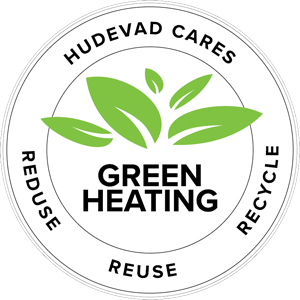
Office spaces often have a reputation of being very cold, especially in the wintertime. Cold offices obstruct efficient work and financial growth. A study done on students show that there is a” best” temperature for performing in school. This study can be applied to an office environment as well for insights into effective performance at work.



Many office buildings take advantage of the natural light that comes with installing large window sections. Large window sections, however, also create a heating challenge. During the summer, the windows act as magnifiers for sunrays, and the room temperature quickly rockets to sky-high degrees. The opposite problem occurs during winter, when poorly insulated windows allow for chilling cold draughts that have the employees freezing. To solve this problem, a heat source must be chosen that is easily adaptable, and effectively heats where the heat is needed.
Source: (Fraunhofer IBP, 2015)
A comfortable room temperature is a very subjective matter, but good indoor climate is universal. A crucial factor in achieving good indoor air quality is natural ventilation, such as opening windows and doors to let in the fresh air. (Source: EPA, 2017)
Choosing a heating system often ends up in a matter of flexibility in room design. However, with the modern radiator solutions, such as wall-integrated radiators, underfloor heating has more cons than pros when it comes down to a comparison. Regulation of temperature is a main factor in achieving a good indoor climate. Radiators with low water content have a fast response time and are quick to cool down or heat up, depending on the conditions of the room. Underfloor heating takes several hours to adapt which means that when you open a window to let in the fresh air, the floor is still emitting heat that goes straight out the window. That is wasted energy, wasted money, and bad for the environment.
Radiators with a large surface and a low water content are regulated very quickly and thus have a minimum of accumulated heat. A fast adaptation to external influences means a lower level of energy consumption and lower CO₂ levels which essentially benefit the environment and keep heating costs down. By using radiators instead of underfloor heating and other heavy heat sources you avoid over-temperatures, achieve optimal and instant climate adaptation, and have less heat loss at the correct temperature.
Low water content is a feature that reduces heat loss and allows for high adaptability. Low water content equals a fast response time, meaning it heats up quickly and, importantly, cools down quickly. That prevent overheating and wasted energy, which is a problem with underfloor heating and older radiators.
Apart from the added comfort that comes with rapidly adaptable temperatures, low water content is also good for the environment. The faster the water can be heated and cooled down, the less energy is used to achieve the right temperature, thus making low water content radiators very energy efficient.
Heat is not just heat. It is not enough just to think about the amount of heat needed when you choose radiators for your project. An aspect which is very often neglected, but is just as important, is the heat distribution options.
Radiation and convection can be combined to form the absolute best heating solution for the respective location. It is a matter of choosing the right radiator
Radiators do not have a reputation of being great assets to interior office design - sometimes the design aesthetic is even valued over the comfortability of a workplace, because conventional radiators are often seen as displeasing to the eye. However, radiators are very important for comfort and are more economical than other commercial heating sources. Hudevad Radiator Design have developed architectural design radiators to cope with this exact challenge.
Radiators are not just a heating source anymore. They may take an active part of the interior as an architectural statement or become a multifunctional tool in designing the usability of a room. If you would rather not have the view of a radiator, but still want the economical and comfort benefits, integrated radiators are perfect for you. And if you have any questions? Talk to us.


If you need help with a project, have a technical question you can't find the answer to or do you need more information before choosing a radiator - then feel free to contact us.